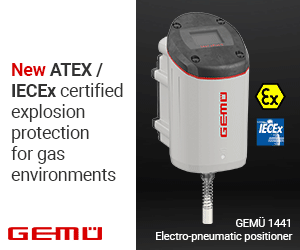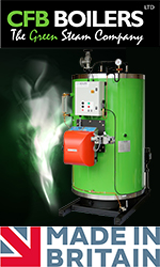Explosion Safety for Mills
It is in the nature of a mill to have metallic parts that collide with one another at high speed, so that ignition sources are highly probable. Again, this is a closed container with a high concentration of dust which may include oxygen, making an explosion extremely likely. Many mill manufacturers therefore offer their machinery in a design that is resistant to explosion pressure (up to 10 bar). Depending on the size of the mill, this may be very expensive for the operator. Alternatives would be flameless venting solution. In either case a decoupler should be attached both above and below the mill. One particularly smart solution for the air intake of the mill is to install a Q-Rohr LF. This is a modified version of the Q-Rohr, well-known in flameless venting, which does not contain the explosion vent that is normally included. As a result, it is possible to aspirate air under normal operation, and the air can then be fed through the stainless steel mesh filter without any trouble. If an explosion occurs, this filter removes the resulting heat and protects the environment from the flames and the explosion pressure.
Explosion isolation
In a production facility the individual parts of the plant are always connected by pipelines. The purpose of explosion isolation is to ensure that the pressure and the flames cannot propagate and so that any adjoining parts of the plant are protected. A distinction is made between active and passive isolation systems.
An active system is alerted to an explosion at an early stage, when an explosion begins to develop. This is done through sensors or detectors which register the rise in pressure or the formation of flames and respond by activating the relevant isolator, e.g. a quench valve.
Passive isolation, on the other hand, responds purely mechanically to the spreading or loss of pressure, on account of its structural characteristics. This also applies to explosion valves. Under normal operation an explosion valve in a pipeline is kept open by the available flow. When an explosion occurs, the valve is closed by the spreading of the pressure front, thus effectively preventing the pressure and the flames from propagating any further.


Fig. 1: Quench valves, open and closed
Flameless venting
If a plant is situated within a building, however, explosion vents are not suitable for pressure relief purposes, as the safety area around them is inadequate to relieve the emerging dust and flames. Such an arrangement would pose an enormous safety risk to humans and machinery. This problem is often solved through the use of vent ducts, which channel the spread of an explosion to the outside. The disadvantage, however, is that it prevents any process-optimised plant design and is usually very expensive: the longer the distance between an explosion and its source, the higher the pressure which the vent duct and the plant need to withstand. This results in higher (production) costs for the vent duct.
Flameless venting, on the other hand, is an option that is economical and effective. Different manufacturers use different technologies in flameless venting.
Let us have a look at one particular technology at this point: The special mesh filter that is used in a Q-Box or Q-Rohr efficiently cools down any flames, preventing both flames and pressure from emerging and ensures particulate retention. The typical increase in pressure and noise that accompanies an explosion within a building is reduced to an almost imperceptible minimum, thus protecting both humans and machinery. In addition to the special stainless steel mesh filter, the Q-Rohr and Q-Box each have an explosion vent with an integrated signalling system that alerts the process control system when the explosion vent has opened.

Fig. 2: Flameless explosion suppression by the Q-Rohr



























































































































